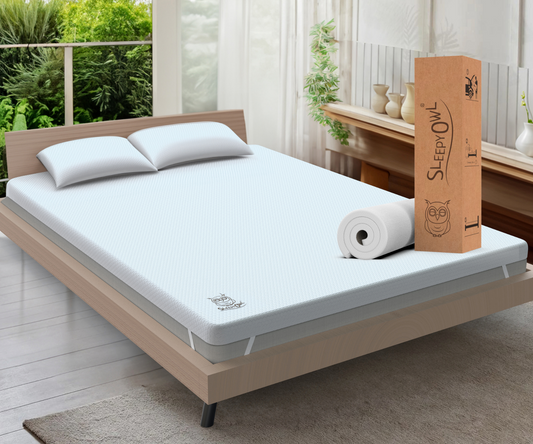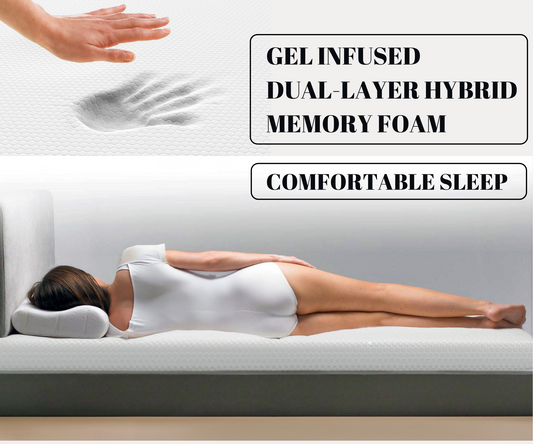The Ultimate Mattress Buying Guide 2025
Sleep is a fundamental aspect of human health, influencing everything from cognitive function to emotional well-being. Understanding your individual sleep needs is the first step in selecting the right mattress. Factors such as age, body weight, sleep position, and any pre-existing health conditions play a crucial role in determining what type of mattress will provide the best support and comfort.
For instance, side sleepers often require a softer mattress that can cushion the shoulders and hips, while back and stomach sleepers may benefit from a firmer surface that maintains spinal alignment. Additionally, personal preferences regarding temperature regulation and motion isolation can significantly impact sleep quality. Some individuals may find that they sleep hot and require a mattress with cooling properties, while others may be sensitive to movement and need a bed that minimizes disturbances from a partner's movements.
By taking the time to assess these factors, you can better understand your unique sleep needs and make an informed decision when it comes to selecting a mattress. Check out this amazing Memory Foam Mattress Topper for a better night's sleep.
Exploring Different Mattress Types
The market is saturated with various types of mattresses, each designed to cater to different sleep preferences and needs. Innerspring mattresses, for example, are traditional options that utilize coils for support. They tend to offer good bounce and breathability, making them suitable for those who prefer a more classic feel.
However, they may not provide adequate pressure relief for some sleepers, particularly those who are heavier or sleep on their sides. Memory foam mattresses have gained immense popularity due to their ability to contour to the body, providing personalized support and pressure relief. This material is particularly beneficial for individuals with joint pain or those recovering from injuries.
However, traditional memory foam can retain heat, which may be uncomfortable for some sleepers. To address this issue, many manufacturers now offer gel-infused or ventilated memory foam options that promote airflow and temperature regulation. Hybrid mattresses combine the best of both worlds by incorporating innerspring coils with layers of foam or latex, offering support along with comfort.
Considering Your Budget
When it comes to purchasing a mattress, budget is often a significant consideration. Mattresses can range from a few hundred dollars to several thousand, depending on the brand, materials used, and technology incorporated into the design. It’s essential to establish a budget before beginning your search to avoid overspending or compromising on quality.
While it may be tempting to opt for the cheapest option available, investing in a quality mattress can lead to better sleep and improved overall health. Many consumers overlook the long-term value of a mattress purchase. A higher-quality mattress may come with a longer warranty and better durability, ultimately saving you money in the long run.
Additionally, consider the potential costs associated with poor sleep quality, such as decreased productivity and increased healthcare expenses. By viewing your mattress purchase as an investment in your health and well-being, you can make a more informed decision that aligns with your financial situation.
Evaluating Mattress Firmness
Mattress firmness is a critical factor that can significantly affect your sleep quality. Firmness levels typically range from soft to extra firm, and finding the right level for your body type and sleeping position is essential for achieving optimal comfort and support. A mattress that is too soft may cause your body to sink too deeply, leading to misalignment of the spine and discomfort.
Conversely, a mattress that is too firm may not provide adequate cushioning for pressure points, resulting in pain and restlessness. To evaluate firmness levels effectively, consider using a firmness scale that ranges from 1 to 10, with 1 being extremely soft and 10 being extremely firm. Most sleepers tend to prefer mattresses that fall between 4 and 7 on this scale.
Side sleepers often benefit from softer mattresses (around 4-5), while back and stomach sleepers typically find comfort in medium-firm options (around 6-7). It’s important to remember that personal preference plays a significant role in firmness selection; what feels comfortable for one person may not work for another.
Examining Mattress Materials
The materials used in a mattress can greatly influence its performance, durability, and overall comfort. Common materials include memory foam, latex, innerspring coils, and various hybrid combinations. Memory foam is known for its contouring properties and pressure relief but can vary in density and quality.
High-density memory foam tends to offer better support and longevity compared to lower-density options. Latex mattresses are another popular choice due to their natural resilience and breathability. They provide excellent support while also being hypoallergenic and resistant to dust mites and mold.
Innerspring mattresses utilize steel coils for support but can vary widely in quality based on coil gauge and construction methods. Hybrid mattresses combine these materials to create a balanced sleeping surface that caters to diverse preferences. When examining mattress materials, consider factors such as durability, breathability, and how well they align with your specific sleep needs.
Comparing Brands and Customer Reviews
With countless mattress brands available on the market today, it can be overwhelming to navigate through the options. Researching different brands is essential for understanding their reputation, product offerings, and customer satisfaction levels. Established brands often have a track record of quality and reliability, while newer companies may offer innovative designs or unique features at competitive prices.
Customer reviews provide valuable insights into real-world experiences with specific mattresses. Look for feedback regarding comfort levels, durability over time, and customer service experiences. Pay attention to patterns in reviews; if multiple customers report similar issues or praises about a particular model or brand, it’s worth considering those insights in your decision-making process.
Additionally, many brands offer trial periods that allow you to test the mattress at home before committing fully; this can be an excellent way to ensure you’re making the right choice.
Testing Out Mattresses in Person
While online shopping has become increasingly popular for mattress purchases, testing out mattresses in person remains an invaluable step in the selection process. Visiting a showroom allows you to physically experience different firmness levels, materials, and styles before making a decision. Take your time lying down on various models in your preferred sleeping position; this will give you a better sense of how each mattress feels against your body.
When testing mattresses in person, don’t hesitate to ask sales associates questions about the materials used, warranty details, and return policies. They can provide additional information that may not be readily available online. It’s also helpful to bring along a partner if you share your bed; this way, both individuals can assess comfort levels together.
Remember that spending time on each mattress is crucial; lying down for just a few seconds may not accurately reflect how it will feel during an entire night’s sleep.
Enhancing Your Mattress with a Memory Foam Mattress Topper
If you find yourself unsatisfied with your current mattress but aren’t ready to invest in a new one just yet, consider enhancing your sleeping experience with a memory foam mattress topper. These toppers are designed to add an extra layer of comfort and support without requiring a complete mattress replacement. They come in various thicknesses and densities, allowing you to customize your sleeping surface according to your preferences.
A memory foam topper can help alleviate pressure points by conforming to your body shape while providing additional cushioning for areas like the shoulders and hips. This can be particularly beneficial for side sleepers who often experience discomfort on firmer surfaces. Additionally, many memory foam toppers are designed with cooling technologies that help regulate temperature throughout the night, addressing concerns about heat retention commonly associated with traditional memory foam mattresses.
Incorporating a memory foam topper into your sleep setup can also extend the life of your existing mattress by providing an added layer of protection against wear and tear. This option allows you to enjoy improved comfort without the financial commitment of purchasing an entirely new mattress while still ensuring that you get the restful sleep you deserve.
Weighted blankets have been shown to help reduce anxiety and promote relaxation, making them a great addition to your sleep routine along with finding the perfect mattress from The Ultimate Mattress Buying Guide 2025.
FAQs
What are the different types of mattresses available in 2025?
In 2025, the most common types of mattresses available include memory foam, innerspring, latex, hybrid, and airbed mattresses.
What factors should I consider when buying a mattress in 2025?
When buying a mattress in 2025, it's important to consider factors such as your preferred sleeping position, body weight, firmness preference, motion isolation, temperature regulation, and budget.
How often should I replace my mattress in 2025?
In 2025, it is generally recommended to replace your mattress every 7-10 years, although this can vary depending on the type and quality of the mattress, as well as individual factors such as wear and tear.
What are the latest technological advancements in mattresses in 2025?
In 2025, some of the latest technological advancements in mattresses include advanced cooling materials, smart mattress technology for sleep tracking and adjustment, and improved motion isolation and pressure relief features.
What is the average cost of a mattress in 2025?
The average cost of a mattress in 2025 can vary widely depending on the type, brand, and size of the mattress, but generally ranges from $500 to $3000 for a queen-sized mattress.


